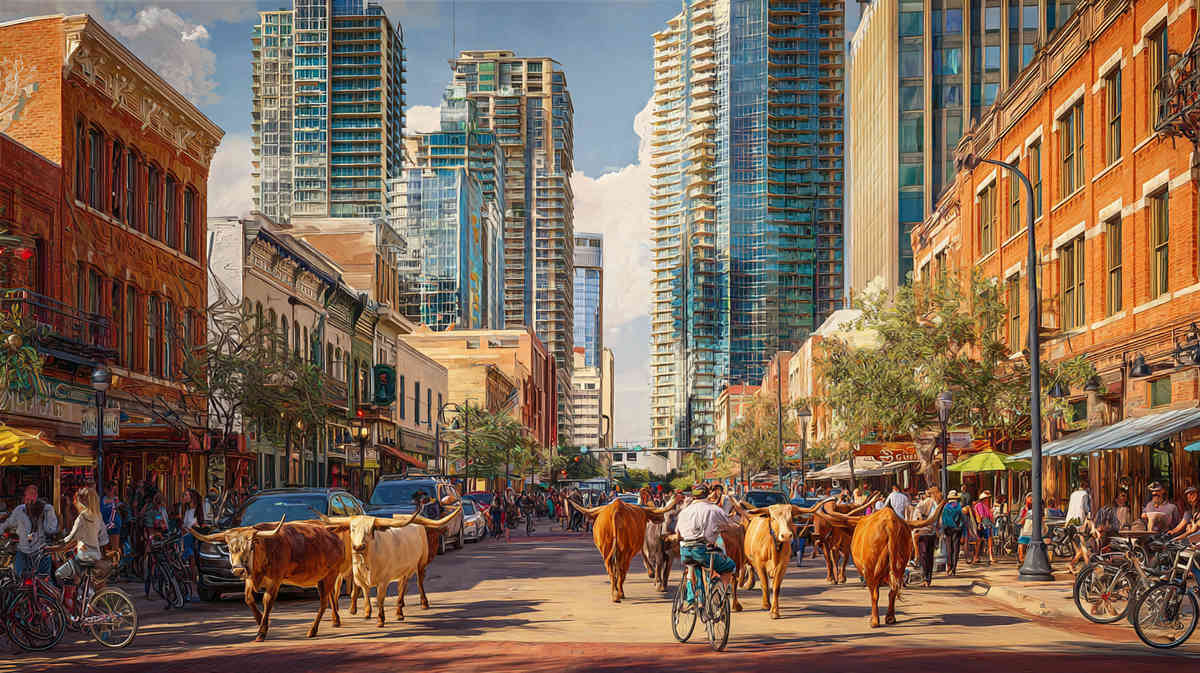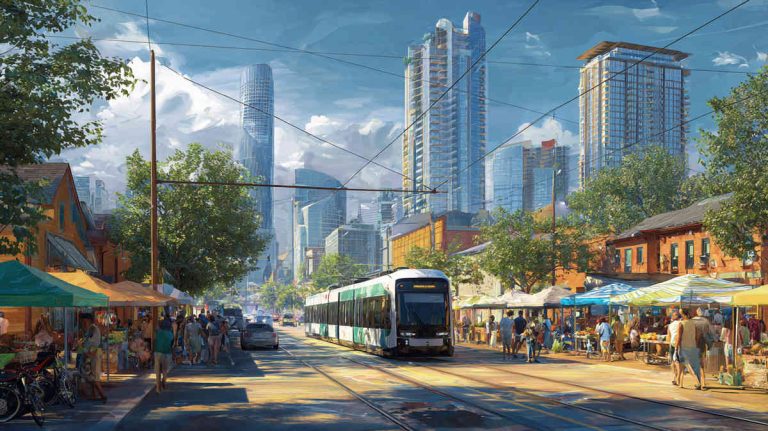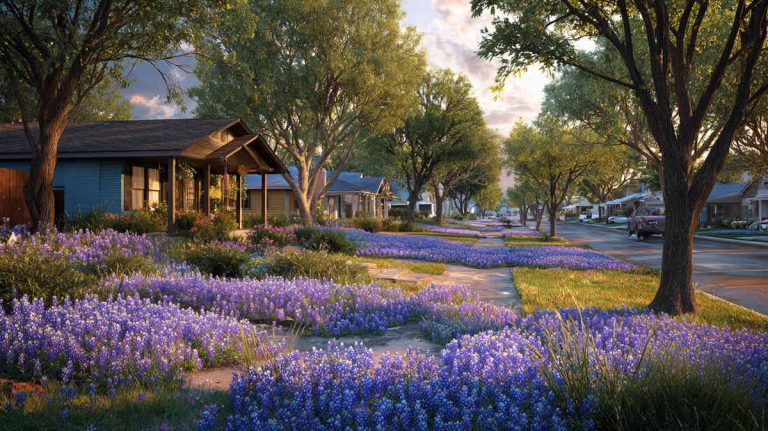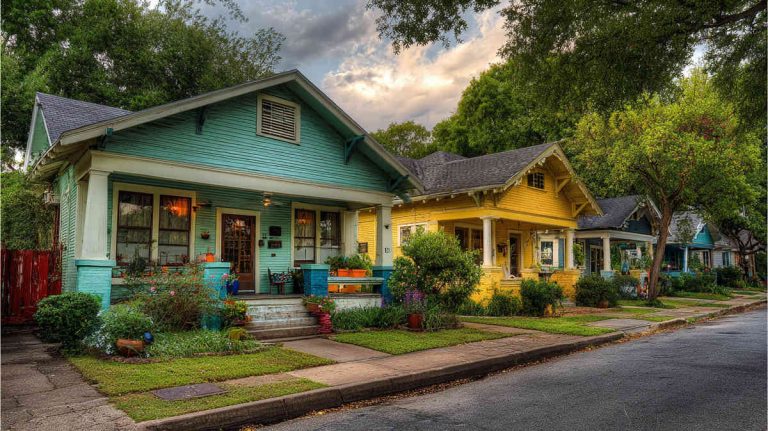Quick Take
Fort Worth is having a moment. With a projected 2025 population just shy of one million and a housing market still priced about 15 percent below nearby Dallas, the city looks downright magnetic to newcomers. Median sale price is hovering near $320,000, inventory runs lean at roughly two months, and year-over-year appreciation sits in the three-to-four-percent pocket. Net migration numbers keep tilting positive, especially among remote workers who want Texas hustle without Austin price tags. Sounds promising, right? Hold that thought. Below are the five real-world matters you need to chew on before packing the moving truck.
The Real-Estate Pulse: Prices, Bidding Wars, and Hidden Fees
Fort Worth housing has long been called “affordable.” It is still less expensive than many big metros, yet the gap is shrinking. January 2025 data from North Texas Real Estate Information Systems shows a median sale price of $319,800 across Tarrant County, up roughly 28 percent in three years. That number alone never tells the full story, so let’s add texture.
• Entry-level resale homes in established subdivisions can list below $275,000, but anything clean and updated under $300k typically earns multiple offers within five days.
• Fresh builds north of the city—in the Alliance and Haslet corridors—start in the mid $300s. Lot sizes run smaller than older neighborhoods, though builders often toss in smart-home tech or closing incentives.
• Historical charm? Check the Near Southside or Oakhurst. Expect creaky floors, real wood trim, and rehab costs that show up late in the game.
Pay attention to property tax rates. Most buyers budget for mortgage and insurance yet overlook the district rate spread that ranges from 2.1 percent to 3.0 percent of assessed value. That difference alone can equal a car payment each month.
HOAs appear in unexpected pockets too. Some charge only $200 per year for common-area mowing. Others collect $150 per month for community pools, park maintenance, and gate security tech. Read every entry in the resale certificate. One missed bylaw about fence height can punch a hole in resale value down the road.
Finally, the city just bumped its impact fee schedule on new builds. Translation: the farther north you build, the more infrastructure costs filter into your closing price. Seasoned agents here negotiate builder credits to offset that line item. Talk to one who has receipts.
Commuting and Connectivity: Roads, Rails, and Wi-Fi in Cowtown
Locals swear traffic is “nothing like Dallas.” They are half right. Interstate 35W drags during rush hour, especially near the downtown mix-master where I-30, I-20, and Chisholm Trail Parkway intersect. A 12-mile hop can morph into 40 minutes if a stalled semi blocks the inside lane. Plan test-drives at 7:30 a.m. on a weekday before you commit to a zip code.
On the bright side, commuter rail options exist. TEXRail shoots east from downtown to Dallas-Fort Worth International Airport in under 40 minutes. TRE trains run parallel to I-30 all the way to Dallas Union Station. Monthly passes cost less than a new set of truck tires. If you can tolerate a parking garage shuffle and scheduled departure times, rail commuting shaves stress.
Inside city limits, bicycle infrastructure keeps expanding. The Trinity Trails network now tops 100 miles, connecting the Stockyards district to Clearfork in the southwest. Electric bikes appear everywhere on weekends. Think leisurely ride, not Tour de France.
High-speed internet is no longer optional. Fiber coverage reached about 72 percent of occupied households by late 2024, led by AT&T and multi-gig newcomer Tachus. If remote work pays your bills, confirm exact upload speeds at the address level. Street-by-street disparities still surprise out-of-towners.
Air travel is an easy play. You get DFW Airport 25 minutes northeast of downtown and Fort Worth Alliance Airport for corporate jets. Hobby pilots use Meacham Field. Bonus: Dallas Love Field sits 45 minutes east if you live for Southwest Airlines Wanna-Get-Away fares.
One last commuting twist. The city dropped e-scooters in 2020 after safety complaints. They returned in 2023 under stricter averaging-speed caps. If a scooter commute to work sounded fun, you are good again yet helmet laws remain fuzzy, so know your risk tolerance.
Culture Shock in the Best Way: Cowtown Meets Craft Beer
First-time visitors expect cowboy clichés. They find two realities living side by side. Yes, longhorn cattle still mosey down Exchange Avenue twice daily. Thirty blocks south, experimental performance art fills a repurposed fire station. That crossover defines Fort Worth’s vibe.
Music pulses through Sundance Square every weekend. Country, blues, and funk spill out of bar patios until midnight. Pay nothing for the shows if you order a single drink. Up the road, Tulips venue books indie-rock acts that usually skip Texas in favor of the West Coast. Tickets rarely top $35.
Museum junkies land in paradise. The Cultural District holds the Kimbell, the Modern, and the Amon Carter within walking distance. Admission to the Carter is free all year. On the first Saturday of every month, so is the Modern. Pack sunscreen and water because shade lines can be long.
Food was once barbecue plus Tex-Mex. Now the roster includes Ethiopian coffee shops, ramen huts, vegan bakeries, and a Neapolitan pizza spot certified by the Italian governing body that polices dough texture. Night markets pop up in South Main Village with pop-up chefs selling birria grilled cheese sandwiches. If your palate gets bored here, you are ignoring invitations.
Sports fandom splits loyalties. Fort Worth claims the TCU Horned Frogs in football and baseball, while just 30 miles east, Arlington houses pro parks for baseball and football. Tailgate season means purple on Saturday, blue and silver on Sunday.
Live rodeo lives year-round inside the Cowtown Coliseum, not just at the January Stock Show. Tourists buy the seats on the rail. Natives sit up high for the better view and cheaper beer.
The city respects its past without turning into a museum. Murals replace blank warehouse walls every week. Emerging playwrights workshop scripts at Amphibian Stage. You can buy cowboy boots at M.L. Leddy’s at noon and sip an IPA brewed with dragon-fruit purée at 6 p.m.
Work, Money, and That Paycheck Math
Employment opportunities keep drawing new residents. Aviation anchors the north side. Lockheed Martin builds fighter jets and hires both engineers and admin staff by the hundreds. American Airlines has the world’s largest training center near DFW Airport; flight simulators run around the clock.
Healthcare is enormous too. Texas Health Resources, Baylor Scott & White, and Cook Children’s collectively employ about 40,000 across hospitals, clinics, and research labs. Complementary businesses—medical billing, device manufacturing, real estate for medical offices—flourish in the slipstream.
Finance holds weight downtown. Charles Schwab relocated its headquarters to neighboring Westlake in 2021, bringing thousands of jobs that straddle the city line. Fidelity Investments and UBS follow suit with regional campuses.
Startup culture quietly bubbles. Coworking spaces like Locavore and Common Desk host pitch events every other Thursday. The city’s economic development grants reimburse up to $30,000 in seed capital for tech companies willing to hire local. Not Silicon Valley yet, but the runway exists.
Wages track slightly below the national median for white-collar roles yet living costs often cancel the difference. Electricity averages 11 cents per kilowatt-hour. Water rates rose eight percent last year, though usage tiers cushion low consumers. Grocery bills align with the national norm, except produce spikes in August when heat strains trucking routes.
Property taxes sting more than state income tax would, considering Texas has none. Run sample calculations before you sign anything. A $350,000 home inside Fort Worth proper can carry a monthly tax burden of $650. Choose unincorporated county pockets or smaller municipalities such as Edgecliff Village and that figure drops almost 20 percent.
Professional networking flows easier here than in larger metros. Show up once at a Real Estate Council breakfast or creatives meet-up, and the name-tag exchange starts. People remember faces because the scene remains tight-knit. That goodwill converts into job tips when openings never reach public job boards.
Schools, Parks, and Everyday Living
School quality matters even if you do not have kids because strong scores prop up resale values. Fort Worth ISD operates more than 140 campuses and just completed a multi-year bond overhaul that upgraded HVAC, roofing, and classroom tech. Average student-to-teacher ratio sits at 14:1. For magnet or specialty programs, Applications Day in November fills seats almost instantly, so set calendar reminders.
Several fast-growing suburbs feed into separate districts known for performance accountability. Examples include Aledo ISD to the west and Northwest ISD to the north. Homes zoned to these districts typically list 10 percent higher than identical houses a mile away. Decide early whether that premium feels worth it.
Higher education includes Texas Christian University, Texas Wesleyan, University of North Texas Health Science Center, and branch campuses of Tarleton State. College sports, research lectures, and continuing-education discounts add cultural heft.
Parks cover 12,000 acres citywide. Trinity Park runs along the river with playgrounds, duck ponds, and free yoga classes at sunrise. Marine Creek Lake on the north side offers a five-mile loop favored by marathon trainees. City of Fort Worth Forestry Department continues planting native post oaks to expand shade canopies along trails.
Grocery options cover all budgets. Chains like H-E-B keep edging northward into the market while Central Market holds court on Hulen Street. If farm-to-table speaks to you, Cowtown Farmers Market opens Saturday mornings year-round behind Veterans Park. Bring cash because some vendors still avoid card fees.
Utilities can surprise newcomers from cooler states. Triple-digit heat in July rockets electric bills over $300 for a 2,000-square-foot house unless you seal attic hatches and tune HVAC units. Many residents sign time-of-use plans allowing cheaper overnight rates. Simple smart-thermostat programming saves real money.
Entertainment budgets run wild or tame depending on your choices. Concerts at Dickies Arena can run $90 per ticket while local theater matinees cost $20. Botanical Research Institute hosts free wildflower walks every second Sunday. In Fort Worth you spend what you want, not what you must.
Living here means accepting weather extremes. Hail storms appear in April and May. Keep comprehensive car insurance. Summer heat lands at least 20 days above 100 degrees. Neighborhood pools, splash pads, and chilled patio misters become survival tools. Winter ice storms show up bi-annually, usually shutting roads for a day. Buy a small generator if remote work timelines cannot slip.
Ready to Put Down Roots?
Fort Worth mixes cowboy grit with start-up spark. Housing still undercuts nearby giants. Commutes feel tolerable if you scout routes before signing a lease. Culture breathes beyond stereotypical boots and spurs. Employers keep adding jobs while parkland and river trails stretch wider every season. That combination explains the steady stream of newcomers and the resilient property values.
Do your homework, run the tax numbers, and walk neighborhoods at different hours. If the sights, sounds, and monthly costs line up with your priorities, moving to Fort Worth might be the chapter that finally clicks.
FAQs
1. How competitive are offers on Fort Worth homes right now?
Homes under $350,000 often fetch three to six offers within the first week. Over list price bids are common but usually stay under ten percent of asking.
2. Can I live in Fort Worth without a car?
Possible near downtown or along TEXRail lines. Outside those pockets you will need wheels or a flexible remote-work schedule.
3. Are property taxes expected to change soon?
The county will reassess in 2026. Early chatter suggests incremental increases rather than sweeping hikes, but exact millage rates remain undecided.
4. What local resources help new residents plug in quickly?
Join neighborhood Facebook groups, attend the monthly Chamber of Commerce newcomer coffee, and check Fort Worth Report’s daily newsletter for community events.
5. Does Fort Worth offer down-payment assistance programs?
Yes. The Neighborhood Services Department runs Homebuyer Assistance Programs that provide up to $20,000 for first-time buyers who meet income and credit guidelines.





